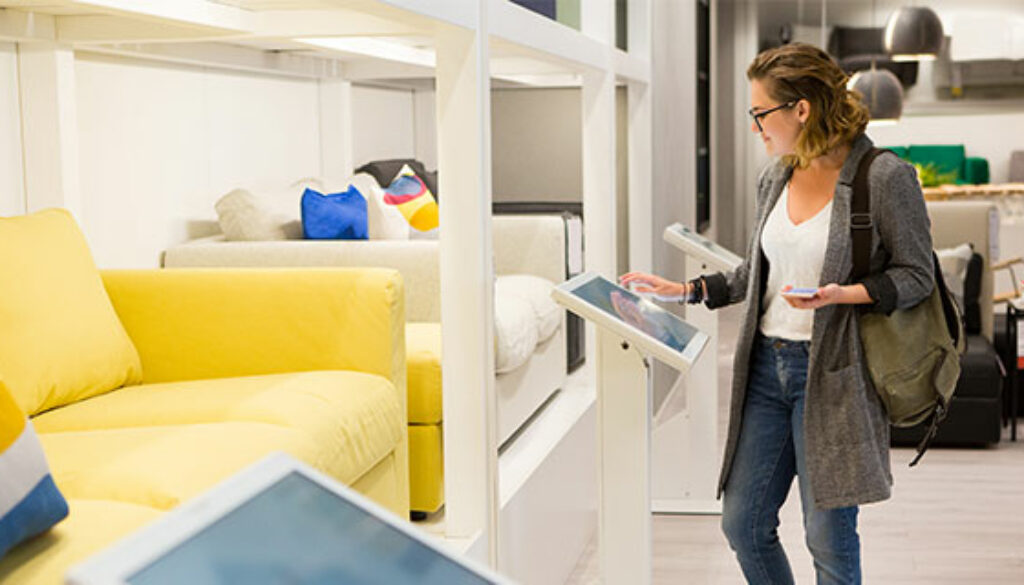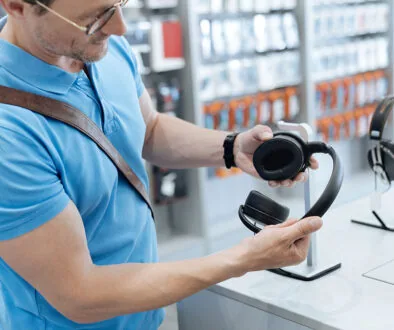Revolutionizing Retail– How to Implement Technology Powerfully
In this article:
Using Technology in POP Displays Gives Shoppers the Experience They Crave
The standard, one-dimensional display simply isn’t going to cut it in today’s marketplace.
The retail landscape is becoming more and more competitive. Despite what the alarmists have said, online shopping has not brought about the end of brick-and-mortar stores.
But a transformation has occurred.
More consumers are demanding a shopping experience, seeking ambiance and interaction.
When roughly 70 percent of purchases happen in the store, it’s easy to see the importance of the POP display. Static signs aren’t enough to get the job done. Technologically advanced retail displays are needed to remain competitive.
High-tech Elements for Custom-Designed Retail Displays
Built-In Digital Signage
When combined with sophisticated computer software, the power of digital signage can open up a world of new possibilities. According to Shopify, 68 percent of customers stated that digital signage would make them more likely to buy the products advertised.
But perhaps even more interesting is that 44 percent said it would cause them to buy the advertised product instead of the one they had planned to purchase!
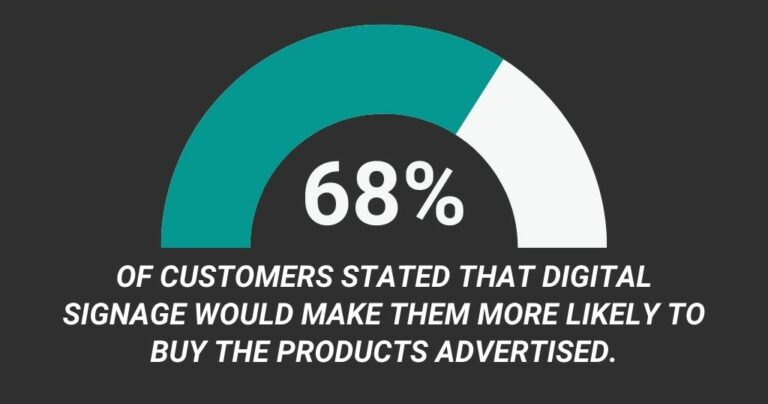
Digital signage can make a huge difference, but it’s important to implement it in a way that is inviting and complementary to your retail environment and the “feel” of your store.
If you aren’t using digital signage, there’s a good chance your competition is—digital signage installations have grown almost 40 percent each year. Most of these are purchased by members of the retail industry, which comprises 25 percent of sales.
Artificial Intelligence for Personalization
Artificial intelligence (AI) is becoming a key player in the retail landscape, and more custom retail displays are taking advantage of it.
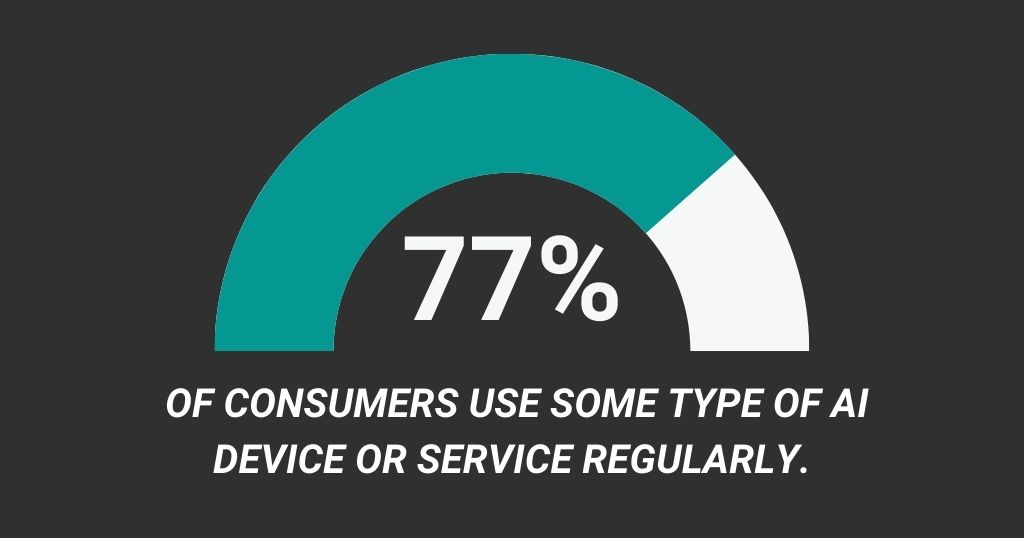 AI has inundated our lives, and roughly 77 percent of consumers use some type of AI device or service regularly. It’s also one of the three main trends that digital marketers are watching.
AI has inundated our lives, and roughly 77 percent of consumers use some type of AI device or service regularly. It’s also one of the three main trends that digital marketers are watching.
The trends are consumer personalization (28.6 percent), voice search (21.23 percent), and AI (25.6 percent), according to Shopify.
One way to implement the power of AI is by using a high-definition screen coupled with a program that can recognize shoppers and greet them by name, perfect for a display used in conjunction with a membership or private club.
Through AI, the customer will be shown items that they might be interested in based on previous shopping habits.
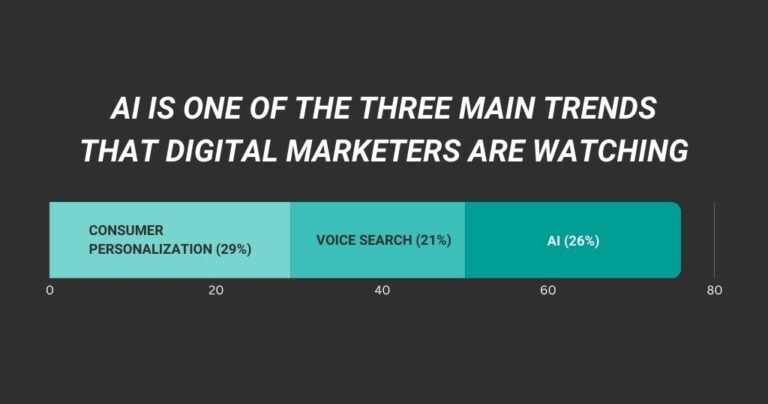
An example of this seamless shopping experience was recounted in Vogue: Business online magazine where shoppers at a Hong Kong store could either sign in using a membership code or a facial scan.
AI then assessed the shopper’s taste in clothes based on what they are wearing and utilized interactive retail displays to provide recommendations.
AI for Real-Time Answers to Customer Questions
Does your display utilize the ability to answer a customer’s questions while he or she is at your display?
By doing so, whether through an online chat or access to a frequently asked questions format, your customer spends more time at your display, building your brand and increasing the likelihood that your product will get purchased.
What about technology to attract Millennials & Gen Z at retail?
Your biggest customer base is on the horizon, and if you’re not implementing the best digital marketing strategies, you’re going to miss a lucrative opportunity.
Millennials and Gen Z are generations that are not only digitally driven, but they also enjoy brick-and-mortar stores.
Therefore, unless you’re implementing solid digital marketing strategies in conjunction with your stellar retail display, you could be losing revenue from these powerful consumers.
Millennials are defined as those born between 1981 and 1996, and Gen Z is the generation that follows the Millennials, born anywhere from 1997 onward.
Forbes stated that the Gen Z generation wields $44 billion in purchasing power, and their population will soon outnumber Millennials.
As for Millennials, the Pew Research Foundation reports that by 2019, the Millennials will outnumber the Baby Boomers.
The sheer numbers are staggering—which is why it’s even more important to know and understand their purchasing habits.
Trend: Physical Stores are Still Popular among Millennials and Gen Z
While many feared online shopping marked the end of brick-and-mortar stores, just the opposite seems to be the case.
While many Millennials and Gen Zers will research a product online, many surveyed said they would prefer to buy it in the store.
It’s also vital to realize that while these generations prefer the in-store experience, they do their product research online. To reach them, you’ve got to implement a digital marketing strategy in addition to your retail POP displays.

Tips for Utilizing Technology in the Retail Environment
1. Use social media to leverage the power of your POP display
Too often, businesses don’t know how to capitalize on social media in a point-of-purchase display. It’s the perfect opportunity to let your audience engage with your brand and gives them a chance to psychologically invest in your brand story.
2. Use digital displays to create an experience
Frequently used to enhance the customer’s in-store experience, digital units in a display could look like:
- Motion sensors that play a video or provide information when someone walks by
- Videos that play on cue
- Touch screens that invite potential clients to explore your product and sign up for your newsletter for certain discounts or special promotions
- A secure console to play video games or virtually “test drive” an electronic product
All of these encourage interaction, which enables potential customers to emotionally connect with your product.
3. Make sure customers can find your stores
Suppose a customer looks you up online and does all their product research. They’ve made their decision and are ready to make a purchase. You’ve coordinated the colors and online specials with your in-store display.
…but does the customer know where your retail store is?
You need to work with your web developer and digital marketing team to ensure that your store locator is accurate and easy to use. Since most searches are done on mobile phones and tablets, it’s important to be sure it’s easy to use on these devices.
If your customer can’t find you easily, it doesn’t matter how powerful your digital display is.
If you’re displaying your product inside a store, make sure that the marketing team for this retailer has updated the Google My Business listing for the business.
We Understand Your Retail Display is Part of a Larger Picture
We’re known for exceeding our customers’ expectations. With the experience we have combined with our “approved supplier” status at major retailers, we know what it takes. From design to distribution, we are your single, end-to-end partner. Let us take it from here.

